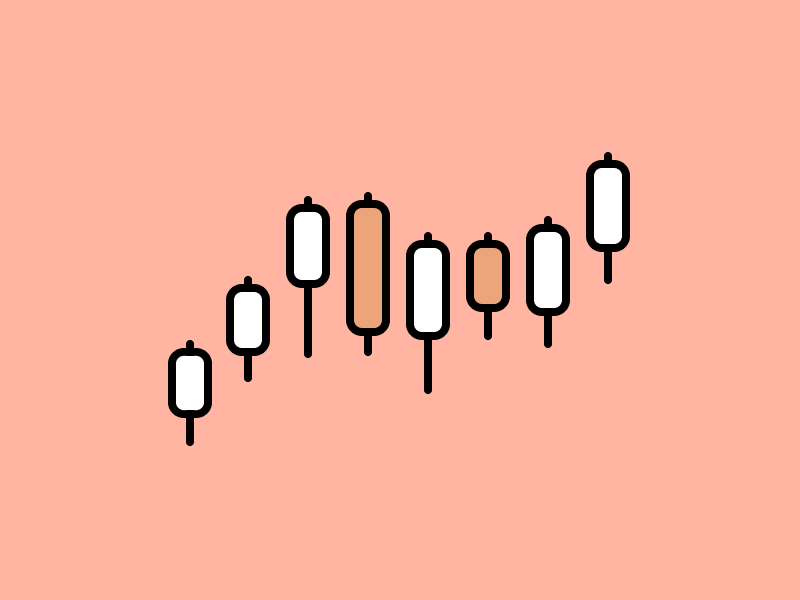Market Analysis 1-7 May: The Fed Raise Interest Rates by 50bps, Crypto Market Weakens

Bitcoin (BTC) Price Movement 1-7 May 2022

After the Fed meeting on May 3-4, we see the equity and crypto markets rally the next day. The 50 bps rate hike has been anticipated and priced in by the market for weeks. The decision only removes uncertainty about a rate hike. However, the next day we saw the full impact on the market with various negative reactions. The pressure on equity and crypto markets is pretty strong, with Bitcoin losing around -6.5% of its value (at the time of writing 7 May 2022).
The first to be discussed is the macro Higher Low (HL) position, which is the black line drawn above. This line has been an important support point for BTC from the middle of last year until now. BTC loses this support level if the weekly chart closes below 38,500.
What will happen if BTC closes below that number? It is likely that the price will drop further into the green zone, which is another test zone for BTC, ranging from 28-36K US dollars. BTC needs the price to be in that range to maintain the bullish macro momentum. If BTC is below that price range, the bearish macro trend will be confirmed.
Also read: What is a bull-bear market?

Bitcoin has also broken through the 55-week EMA support. Pay attention to the RSI value 43, which has historically been the main signal for BTC on the weekly chart. A drop below 43 has historically been a significant dump indicator, which is still true today.

BTC has also broken the 0.236 Fibonacci support line on the weekly chart, showing another bearish indicator that needs attention.

On the weekly chart, BTC finally started falling down and broke out of the bearish channel. How far will it drop? Looking at the chart above, notice that the price decline before the bearish channel occurred was 45%. Therefore, the price decline after that is also likely to be the same, 45% from the current price, which amounts to 18 thousand US dollars.
Moreover, what is more surprising is the downside potential is equivalent to the 200-week MA support line.

Notice the largest institutional profile for BTC converges at the 0.236 Fibonacci line (which is also the HL support line). The institutional profile shows that BTC has reached an area of solid buying interest.

Previously, we talked about the formation of bear flags and the exit of BTC from the bearish channel on the monthly chart. For the first time since mid-2020, Bitcoin fell from the Ichimoku Kijun support line. Historically, the Kijun-sen line (blue line) is a good reference point to determine that we are still in a bullish trend. Even though the monthly candle is far from closing, we should watch out for the monthly Kijun point as support.
💡 What is the Ichimoku Kijun? The Ichimoku Kijun is a technical indicator that shows support and resistance points. The Kijun-sen line is calculated based on an average of the highest and lowest prices over the last 26 days.

Let’s take a look at the BTC log growth curve. Referring to the chart above, it can be seen that the 0.14 Fibonacci level (Green diagonal line) has been holding from January to April. For the first time, BTC broke through the support level. If we close the monthly candle below the 0.14 Fibonacci support level, then the next support will be around 33k.
Also, note that BTC is currently at the lower end of the log growth curve. However, we are not yet in the range of the lowest curve, which is at 33K. In March 2020 there was also a false signal, where BTC hit the bottom of the curve before reversing back above the support line.

On the 3-day chart, BTC will soon experience a death cross between the 50 and 200-day MAs which last occurred in November 2018. The approximate time of this event is May 13-16, a week from now.
On-Chain Analysis

Bitcoin reserves on all exchanges remain at a 3-year low. Additionally, spot and derivative Exchange reserves increased slightly. Whales and miners are still HODL. Then, the trading volume on exchanges is relatively increased and the amount of BTC transferred to the Derivative Exchange is reduced.

Despite the market price of BTC ($36.2K) being down -8.3%, and a significant long liquidation ($111M) in the perpetual market, the futures market is still overheated. The estimated leverage ratio is still near an all-time high, and funding levels are in the neutral zone. Both of these indicate high price volatility.
Market Analysis Conclusion
- 🏦 The Fed’s rate increase is the catalyst for price declines in the equity and crypto markets.
- 📉 Bitcoin lost the Macro Higher Low (HL) support level, broke the 55-week EMA line, and fell below the 0.236 Fibonacci line. The BTC trend also points to the potential of a further decline to the 200-week moving average. Even so, the institutional profile shows BTC prices are approaching a dense buy-zone for institutional investors.
- ⚠ Bitcoin also lost the Ichimoku Kijun line as a support point and is at the bottom of the log growth curve with a support price at $33 thousand US dollars. Furthermore, BTC price will experience a death cross between MA 50 and 200 days in the next few days. On-chain, reserves on the exchange are still at their lowest point in the last 3 years and the futures market is still overheated.
News From the Altcoin World
- 💰 Fantom Liquidation: A trader who pledged 59 million FTM tokens into the Scream Finance DeFi loan apps went into liquidation and dropped the FTM price to a point of $0.79 US dollars. The liquidation occurred on April 29 because traders under the pseudonym Roosh borrowed SOLID and DEUS tokens whose prices continued to decline and triggered the liquidation of Roosh’s FTM positions. Roosh was unable to cover his SOLID and DEUS losses as he locked both tokens for 4 years.
- 📉 UST experiences a depeg: Stablecoin from Terra, UST, experiences a depeg as its price drops to close to $0.98 US dollars. A depeg is a situation where the price of a stablecoin is no longer equivalent to the asset it is pegged to. This sudden drop came as a trader sold $285 million UST dollars.
- 💵 Stablecoin TRON USDD officially launched: USDD algorithm stablecoin has officially launched on blockchain Tron. Similar to Terra’s stablecoin, UST, USDD is also designed to provide incentives for arbitrageurs or those who trade with the aim of taking advantage of price imbalances in two different markets. Like Terra, Tron is also planning to buy $10 million worth of Bitcoin as well as other crypto-assets for reserve.
Other Important News From The Crypto World In The Last Week
- The Fed’s FOMC meeting: The Federal Open Market Committee (FOMC) ended its two-day meeting on Wednesday with the announcement of a 50 basis point, or 0.5% rate hike. This is the second of seven rate adjustments expected to be announced this year. In March, the Federal Reserve raised its benchmark interest rate by 25 basis points, or 0.25%, which was the first increase since 2018.
- Gucci accepts crypto payments: Luxury fashion house Gucci announced it will accept cryptocurrency payments at select stores in the United States starting later this month. Buyers who wish to pay with crypto will be sent a link with QR code information to execute payment through their crypto wallet. Gucci plans to implement this system in all its branch stores in the United States by the middle of this year.
References
- Liam J. Kelly, How $50 Million in Loans Nearly Crashed Fantom, Decrypt, accessed on 8 May 2022.
- Yashu Gola, LUNA drops 20% in a day as whale dumps Terra’s UST stablecoin — selloff risks ahead?, Coin Telegraph, accessed on 8 May 2022.
- Ryan Weeks, Tron’s new algorithmic stablecoin USDD goes live, The Block, accessed on 9 May 2022.
- Derek Andersen, Fed hikes interest rates by 50 basis points in effort to combat inflation, Coin Telegraph, accessed on 9 May 2022.
- Jason Levin, Gucci and Starbucks Go Crypto to Bond with Customers, The Defiant, accessed on 9 May 2022.
Share


